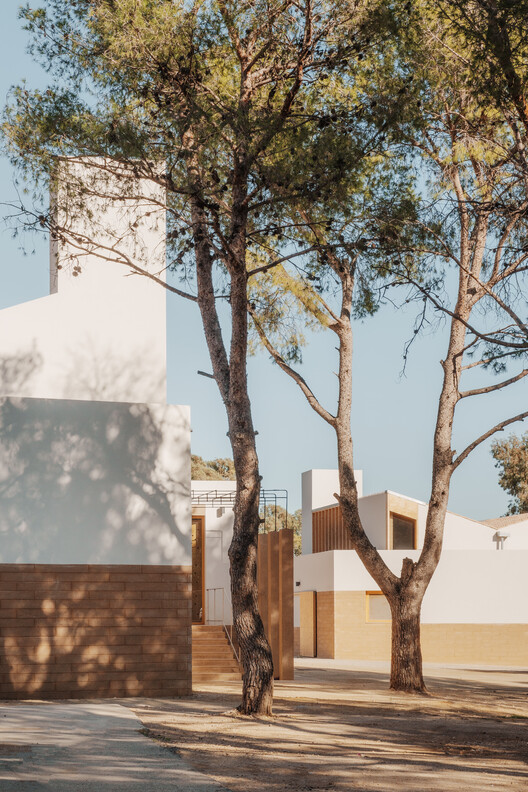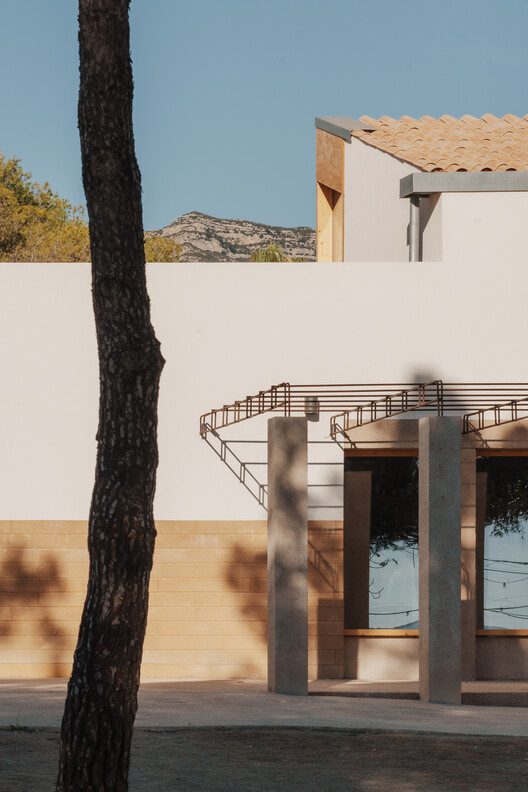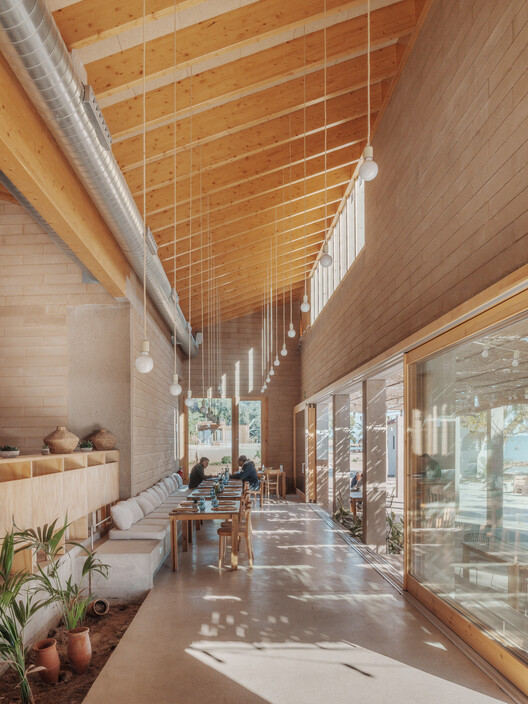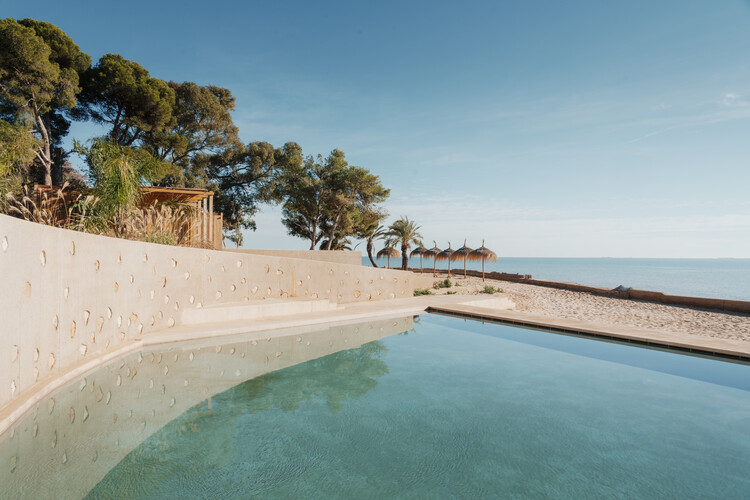
-
Architects: Bajet Giramé, JAAS
- Area: 8000 m²
- Year: 2023
-
Photographs:Joan Guillamat
-
Lead Architects: Pau Bajet, Maria Giramé, Manuel Julià

Text description provided by the architects. Every year, sometime in the autumn, a four to six-month window opens for small improvement works to be made in anticipation of the desired spring opening date of ALFACS, a vacation spot in Alcanar, Tarragona, on the Mediterranean Sea's edge and near the Delta de l’Ebre Natural Park. Since 2016, the Barcelona-based studios Bajet Giramé and JAAS have been leading this respectful and meticulous gradual architectural metamorphosis: a progressive transformation that adds new elements and quality spaces every year for the enjoyment of its visitors. Maria Giramé, Pau Bajet and Manuel Julià, architects and heads of their respective studios, explain the philosophy behind this renovation under the motto "there is no single project, but a process that is constantly evolving". They emphasize a continuous process of evolution rather than a single, completed project. An approach that underscores flexibility, adaptability, and a long-term vision: There is no "one" project to be completed, but rather a repertoire of strategies and infrastructural actions that have led to a process that is meant to be endless, in constant transformation.


This repertoire begins with the construction of old and new stepped terraces: walls and platforms that serve as quasi-permanent supports for future light architectures (whether in the form of textile tents, pergolas, or bungalows) that temporarily appropriate each place. Instead of unitary objectual conceptions, the architects propose a project of projects or, in other words, an archipelago of diverse interventions.



The foundations of a new Alfacs identity - The strategic approach of the holiday project, conceived in 2016 with a long-term vision, took into account the different existing zones of the client in the same territory and placed the campsite as the epicenter of the transformation. Since its conception, the entire project has been rooted in the local identity and the diversity of resources and landscapes of the region, combining architecture with ethics, society, local history, and culture. In 2021, the need to renovate some multi-service pavilions in the same campsite marked a turning point and laid the foundations for the resort. This first project, selected for the FAD'22 awards under the name "Outdoor Pavilions," captures the essence of all the subsequent interventions in Alfacs. The renovation involved the reorientation of two existing pavilions and constructing a new one, creating a central courtyard.

Dialogue between spaces - The main buildings, characterized by their sustainable construction, juxtapose materials such as compacted earth, tiles, and wood, blending modernity and durability with the environment. The vegetation becomes a central axis, creating a natural oasis in every corner of the site and prioritizing the well-being of the outdoor spaces, where the visitor's life is mainly lived. Old shady pines, aromatic gardens with native plant communities, a multitude of pergolas, reed and vine trellises, groups of wooden huts, and a wide variety of spaces make Alfacs an ideal place to enjoy the summer. The central buildings have large communal and meeting areas under visible sloping tiled roofs.


The auxiliary pavilions are designed as discreet infrastructural bays that house and dignify daily activities such as laundry, dishwashing, personal hygiene, car washing, etc. All these spaces open onto communal gardens, cozy verandas, and trellises where vegetation grows, transforming these activities into playful and pleasant experiences.

Interior and exterior ambiguity - Graduality defines the transformation, with new structures anchored in the existing topography, creating a dialogue between the artificial and the natural. In this way, visitors encounter a variety of spaces, from communal areas to intimate corners, all designed to maximize outdoor enjoyment. In addition, the bungalow areas, built in wood, are set on walls and concrete feet. Each unit has a terrace with sea views, which was a major challenge and a success for the project. These compact buildings, with a ventilated envelope of sawn planks attached to an exoskeleton that serves as a porch and support for photovoltaic panels, are designed to visually disguise where one ends, and the other begins and are constructed in sections to offer different interior layouts.


For this project, Bajet Giramé and JAAS propose the construction of deliberately ambiguous habitats, between exterior and interior, very diverse, as wide, communal, and sunny as intimate and shady, offering corners, topographies, porches, pools, and gardens, with a spatial linkage that gives vitality to this vacation landscape. Additionally, the existing topography of a small urbanized cove, occupied by camping pitches more than fifty years ago, has been recovered in front of the undulations of a rocky coastline, where wild coves and low cliffs follow one another. The infilling of this cove with flinty sand and the construction of a pool against a large circular retaining wall respond to the collective desire to enjoy a small beach sheltered from the sea. In this way, the communal character of the area is restored for the use and enjoyment of all summer visitors.



















